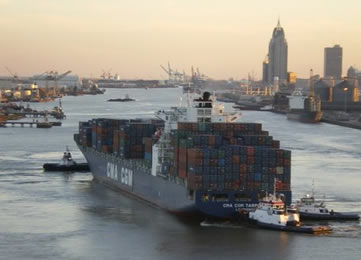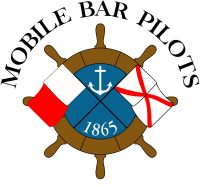Safety Guidelines

THE FOLLOWING GUIDELINES ARE STRONGLY RECOMMENDED BY THE MOBILE BAR PILOTS, KEEPING IN MIND THE SAFE NAVIGATION OF VESSELS PROCEEDING TO OR FROM THE PORTS OF MOBILE AND/OR THEODORE.
- Any vessel whose length is 1000 feet or greater regardless of beam shall require two (2) pilots. The Mobile Bar Pilots reserve the right to mandate Daylight Transit of any vessel whose length is 1000 feet to 1050 feet regardless of beam in the Mobile/Theodore Ship Channel(s) if the status of Navigational Aids or weather warrants. Any vessel whose length is over 1050 feet, regardless of beam, is subject to review of the Safety Committee and the majority of the pilots to determine if Daylight Transit is required.
- Vessels whose dimensions are 850 feet x 135 feet or greater require daylight turning in the harbor above Upper Bay Turning Basin.
- The channel shall be limited to one-way traffic when a vessel whose beam exceeds 115 feet is transiting the ship channel. An exception to this rule is as follows: The combined beam of two meeting vessels shall not exceed 226 feet and the maximum draft of one of these vessels shall not exceed 25 feet.
- Maximum combined draft of two meeting vessels shall not exceed 85 feet.
- Any two vessels with a combined LOA of 1650 feet or greater will not be allowed to meet in the channel if the combined draft is greater than 75 feet.
- The maximum combined length of any two vessels that will be allowed to meet in the ship channel will be 1775 feet, regardless of draft.
- WIND SPEED – Certain Vessels, especially RO/RO or Pure Car Carriers (PCC), due to their design have a very large side profile, or “Sail area” and are especially vulnerable to high winds. Pilots may choose not to start a vessel with a large sail area into the Mobile Ship Channel or sail from Mobile Harbor during occasions of high wind speeds.

